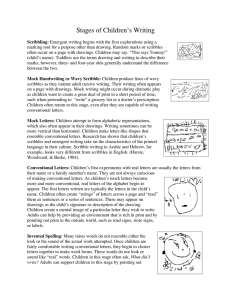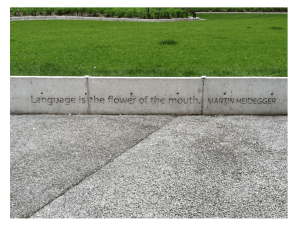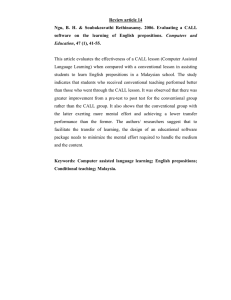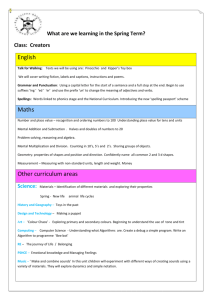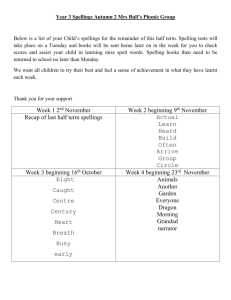Stages of Children’s Writing
advertisement
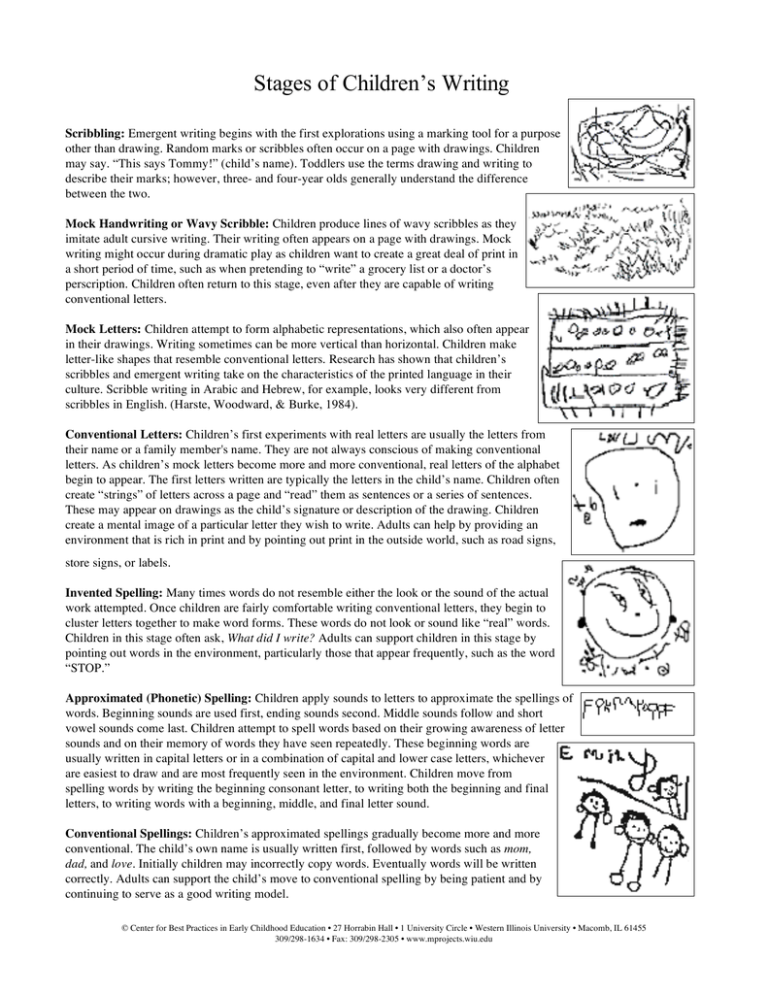
Stages of Children’s Writing Scribbling: Emergent writing begins with the first explorations using a marking tool for a purpose other than drawing. Random marks or scribbles often occur on a page with drawings. Children may say. “This says Tommy!” (child’s name). Toddlers use the terms drawing and writing to describe their marks; however, three- and four-year olds generally understand the difference between the two. Mock Handwriting or Wavy Scribble: Children produce lines of wavy scribbles as they imitate adult cursive writing. Their writing often appears on a page with drawings. Mock writing might occur during dramatic play as children want to create a great deal of print in a short period of time, such as when pretending to “write” a grocery list or a doctor’s perscription. Children often return to this stage, even after they are capable of writing conventional letters. Mock Letters: Children attempt to form alphabetic representations, which also often appear in their drawings. Writing sometimes can be more vertical than horizontal. Children make letter-like shapes that resemble conventional letters. Research has shown that children’s scribbles and emergent writing take on the characteristics of the printed language in their culture. Scribble writing in Arabic and Hebrew, for example, looks very different from scribbles in English. (Harste, Woodward, & Burke, 1984). Conventional Letters: Children’s first experiments with real letters are usually the letters from their name or a family member's name. They are not always conscious of making conventional letters. As children’s mock letters become more and more conventional, real letters of the alphabet begin to appear. The first letters written are typically the letters in the child’s name. Children often create “strings” of letters across a page and “read” them as sentences or a series of sentences. These may appear on drawings as the child’s signature or description of the drawing. Children create a mental image of a particular letter they wish to write. Adults can help by providing an environment that is rich in print and by pointing out print in the outside world, such as road signs, store signs, or labels. Invented Spelling: Many times words do not resemble either the look or the sound of the actual work attempted. Once children are fairly comfortable writing conventional letters, they begin to cluster letters together to make word forms. These words do not look or sound like “real” words. Children in this stage often ask, What did I write? Adults can support children in this stage by pointing out words in the environment, particularly those that appear frequently, such as the word “STOP.” Approximated (Phonetic) Spelling: Children apply sounds to letters to approximate the spellings of words. Beginning sounds are used first, ending sounds second. Middle sounds follow and short vowel sounds come last. Children attempt to spell words based on their growing awareness of letter sounds and on their memory of words they have seen repeatedly. These beginning words are usually written in capital letters or in a combination of capital and lower case letters, whichever are easiest to draw and are most frequently seen in the environment. Children move from spelling words by writing the beginning consonant letter, to writing both the beginning and final letters, to writing words with a beginning, middle, and final letter sound. Conventional Spellings: Children’s approximated spellings gradually become more and more conventional. The child’s own name is usually written first, followed by words such as mom, dad, and love. Initially children may incorrectly copy words. Eventually words will be written correctly. Adults can support the child’s move to conventional spelling by being patient and by continuing to serve as a good writing model. © Center for Best Practices in Early Childhood Education • 27 Horrabin Hall • 1 University Circle • Western Illinois University • Macomb, IL 61455 309/298-1634 • Fax: 309/298-2305 • www.mprojects.wiu.edu
